We finally conclude our Naruto series (read part 1 & part 2 if you haven’t yet!).
I start the final part with one of the most popular and controversial characters (and one of my favourites!), the face of the Akatsuki, the leader of Amegakure, the one with the Rinnegan – Pein. Without much ado, let us jump right in!
Six paths of pain
The bodies of the six Peins which Nagato stores in a hidden chamber in Amegakure’s tallest tower. The corpses are seen to be ordered with a numbering scheme that corresponds to the sequence of the six Buddhist Realms of Existence (संसार, Saṃsāra in Sanskrit).
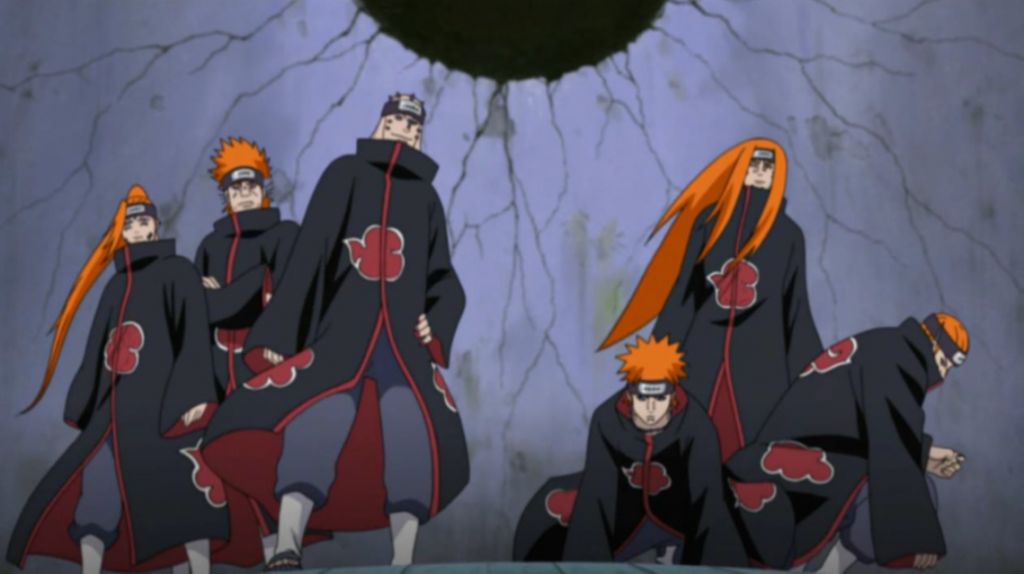

The Naraka Path Pein is a particularly fascinating case. Naraka is the Sanskrit word for hell, where souls are sent to atone for their sins according to Hinduism. Yama, the God of Death, judges living beings after they die and assigns appropriate punishments for them. Interestingly enough, the Jigokudou interrogates his victims and uses the ‘King of Hell’ to extract their life-force in the form of a large tongue, which he proceeds to cut if they are found to be lying or refuse to answer.
(The Buddhist version of Yama – Enma – appears to have influenced the name of the summon of the Third Hokage, Sarutobi Hiruzen, Monkey King Enma)
Furthermore, the Naraka Path’s ‘King of Hell’ has amazing restorative abilities, as was seen when he fully restored the wounded Asura Path, which can be seen as an allusion to the rebirth of souls after their punishment in hell is completed.
Interestingly, the Animal Path Pein was seen to specialise in summoning animal-like creatures during the Konoha Invasion Arc. And the ‘warring demon’ Asura Path Pein stayed true to its Hindu/Buddhist origins with its powerful offensive moves.
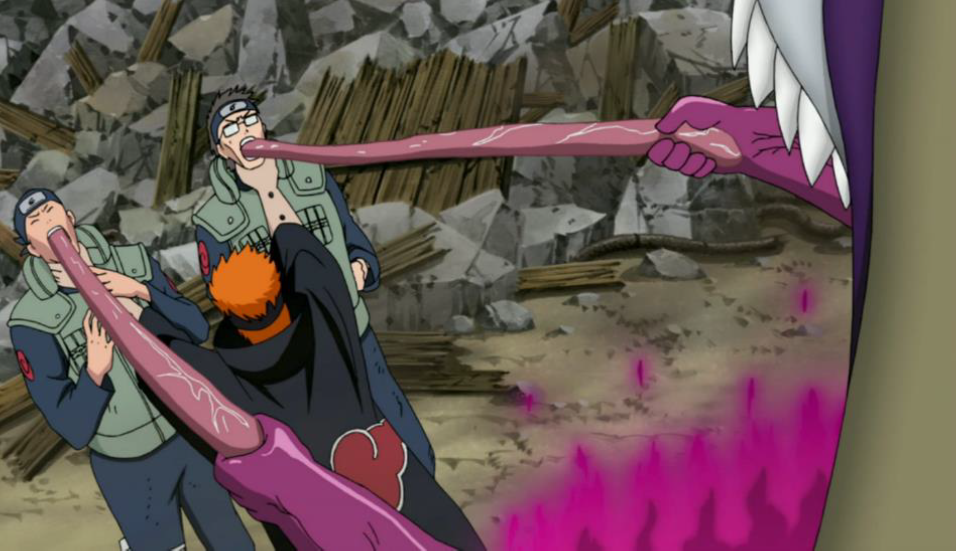
Credits: Kishimoto Masashi (Naruto Shippuden anime)
Indra & Ashura
And now let’s talk about probably the most popularly known and direct connection between Indian mythology and Naruto. Indra, the lord of the Heaven, the leader of the Gods, has always been engaged in an eternal conflict with the Asuras, the demigods. Now you see where the rivalry of the sons of the Sage of Six Paths, which transcends generations stems from. Indra, the elder brother and progenitor of the Uchihas, and Ashura, the ancestor of clans like Senju and Uzumaki, have continued to feud even after their death, by the means of their reincarnates.

Credits: Kishimoto Masashi (Naruto: Volume 70 cover)
On one hand, Indra swore to destroy ninshū (the peaceful precursor of contemporary ninjutsu created by his father) despite the number of times he might have to reincarnate; on the other hand, Ashura pledged to end the rift between the two brothers, no matter how long it might take. Although the roles of Indra and Ashura seemed to be reversed, for Indra was portrayed as the villain, Kishimoto stayed true to the source by highlighting the fierce rivalry between the two brothers.
Born seemingly without any superior capabilities, unlike his elder brother, Ashura went on to unlock his remarkably powerful life-force with his unbending perseverance and went on to perfect taijutsu and ninjutsu as well. In Hindu mythology, Asuras have always been known to possess brute strength and even Persian texts describe them as powerful superhuman beings. Sasuke, the last pure-blooded Uchiha (descendants of Indra), uses an extremely formidable technique called Indra’s Arrow (インドラの矢 Indora no Ya), which allegedly takes inspiration from Hinduism. Indra, who is also the God of Thunder, wields a thunderbolt weapon known as Vajra.
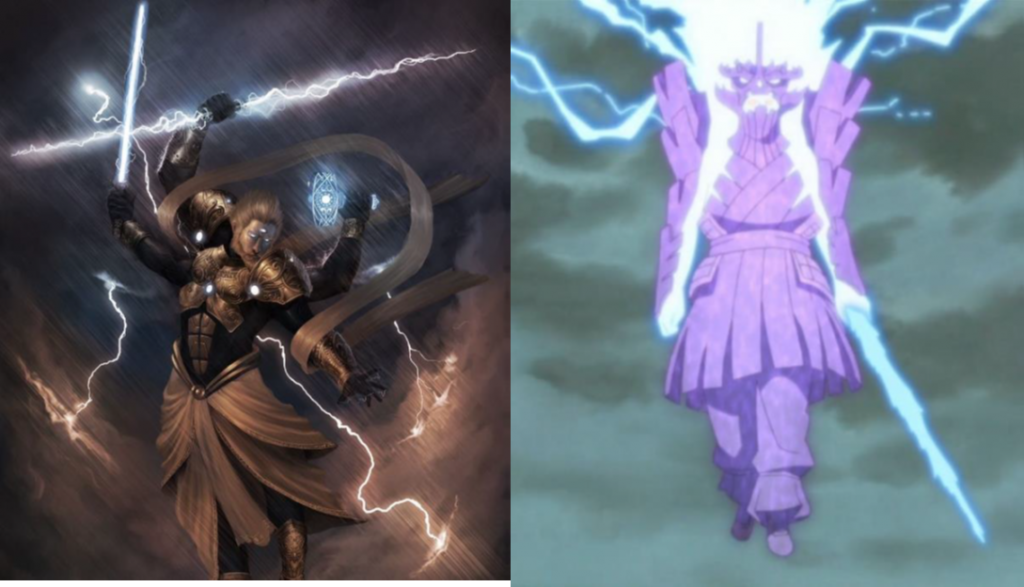
Credits: molee (https://www.deviantart.com/)
(Right)Sasuke tinkering with his Susanoo to make lightening-infused bow and arrow.
Credits: Kishimoto Masashi (Naruto Shippuden anime)
Let’s conclude with a fun little trivia from the time when Orochimaru was intimidating and the Third Hokage was alive. The theme of our serpentine Legendary Sannin, the thirteenth track in Masuda Toshio’s album Naruto Original Soundtrack II (2004), which was mostly instrumental, actually had one lyric which was not in Japanese but Hindi! The line which goes like दिल की ख्वादिशों से बातें कर (dil ki khwahishon se batein kar) meaning “talk to the desires within oneself”, aptly captures the essence of Orochimaru’s story, as he has been seen to be singularly driven by his aspirations, willing to take any means to achieve them.
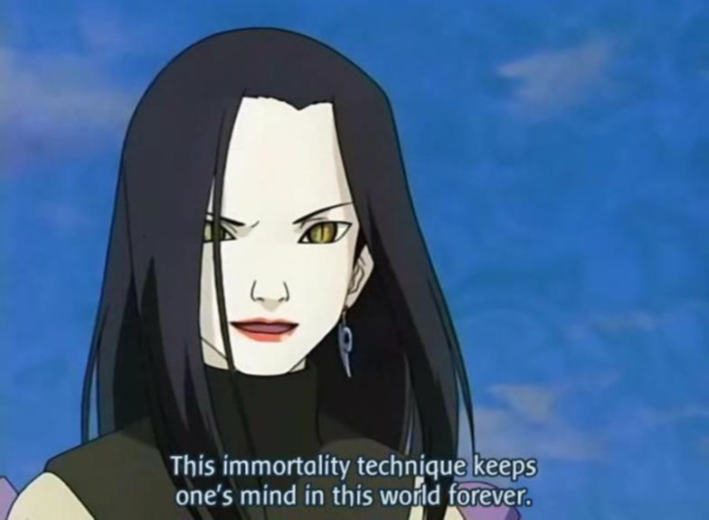
Credits: Kishimoto Masashi (Naruto anime)
By skilfully weaving a variety of myths and legends into Narutoverse, Kishimoto has not only rendered the world of Ninjas even more fascinatingly complex and colourful but has also contributed heavily to mythology as a whole. Remoulding myth to suit the modern times is a fantastic way of reviving the weakened roots of the past and when phenomena like Naruto make it big on the global arena, realising these linkages can have broad-ranging implications for intercultural relations world harmony. Next time someone says anime/Naruto is for kids, do make them read this blog. If you have observed any connections between Naruto or any of your favourite animes or mangas and mythology, do comment below! Let’s keep the conversation going.
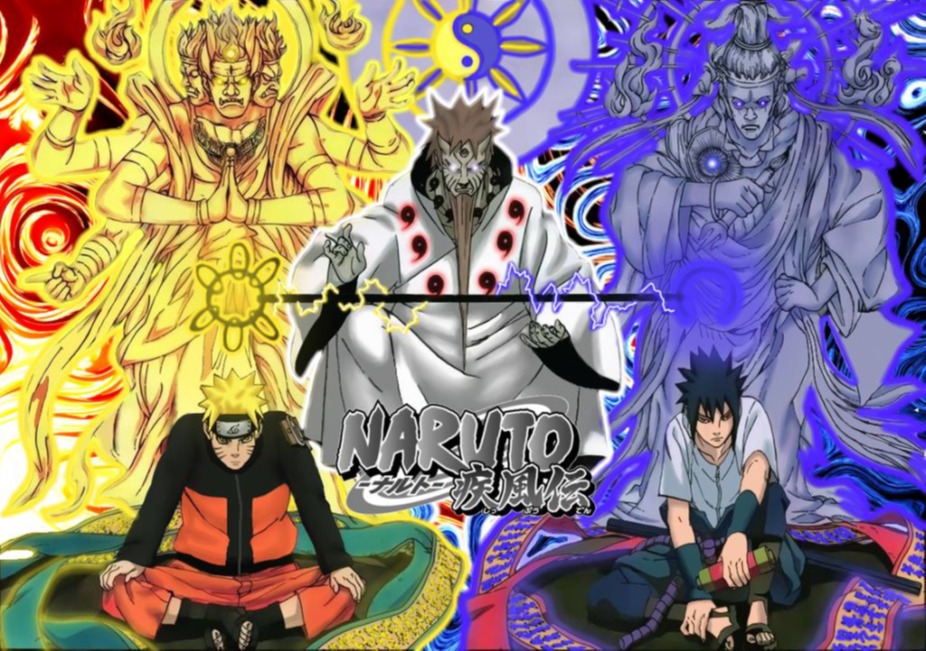
Credits: Kishimoto Masashi (Naruto Vol70, Ch671)

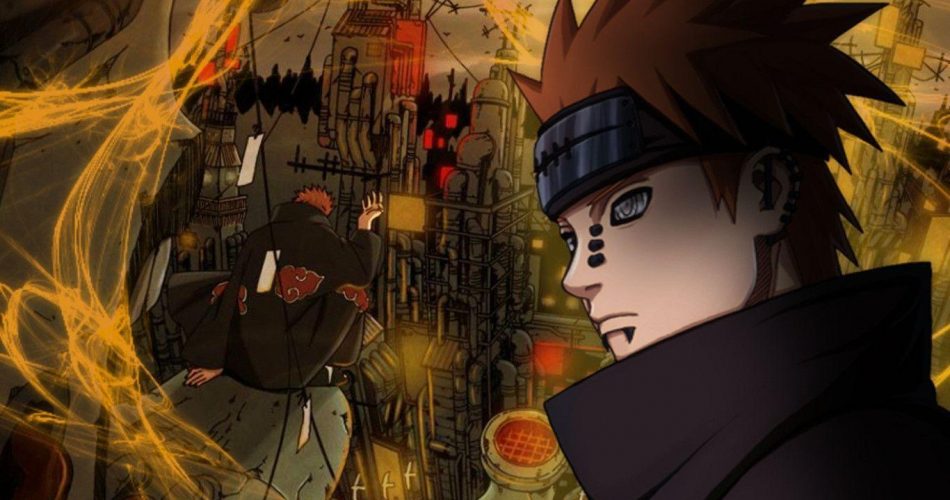
Comments